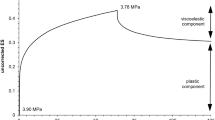Abstract
Ticks are widespread ectoparasites. They feed on blood of animals like birds and mammals, including humans. They are carriers and transmitters of pathogens, which cause many diseases, including tick-borne meningoencephalitis, lyme borreliosis, typhus to name few. The best way to prevent infection is to remove the ticks from the host as soon as possible. The removal usually is performed mechanically by pulling the tick. This however is a risky process. Tick irritation or injury may result in it vomiting infective fluids.
On a quest of creating of a portable device, which utilizes radio-frequency alternating current for contact-less tick removal, we simulate the thermo-electrical processes of the device application. We use the finite element method, to obtain both the current density inside the host and the tick, and the created temperature field. The computational domain consists of the host’s skin, the tick, the electrodes, and air.
Experiments on nested grids are performed to ensure numerical correctness of the obtained solutions. Various electrode configurations are investigated. The goal is to find suitable working parameters – applied power, duration, position for the procedure.
Access this chapter
Tax calculation will be finalised at checkout
Purchases are for personal use only
Similar content being viewed by others
References
Chang, I.A., Nguyen, U.D.: Thermal modeling of lesion growth with radiofrequency ablation devices. BioMed. Eng. OnLine 3, 27 (2004)
Lawrence Livermore National Laboratory Scalable Linear Solvers Project. http://www.llnl.gov/CASC/linear_solvers/
Henson, V., Yang, U.: BoomerAMG: a parallel algebraic multigrid solver and preconditioner. Appl. Numer. Math. 41(1), 155–177 (2002). Elsevier
Brenner, S., Scott, L.: The Mathematical Theory of Finite Element Methods. Texts in Applied Mathematics, vol. 15. Springer, New York (1994)
Iserles, A.: A First Course in the Numerical Analysis of Differential Equations. Cambridge University Press, Cambridge (2009)
Kosturski, N., Margenov, S., Vutov, Y.: Supercomputer simulation of radio-frequency hepatic tumor ablation. In: AMiTaNS 2012 Proceedings, AIP CP 1487, pp. 120–126 (2012)
Georgiev, K., Kosturski, N., Vutov, Y.: On the adaptive time-stepping in radio-frequency liver ablation simulation: some preliminary results. In: Lirkov, I., Margenov, S., Waśniewski, J. (eds.) LSSC 2013. LNCS, vol. 8353, pp. 397–404. Springer, Heidelberg (2014)
Schöberl, J.: NETGEN an advancing front 2D/3D-mesh generator based on abstract rules. Comput. Vis. Sci. 1(1), 41–52 (1997). Springer
Gurung, D.: Thermoregulation through skin at low atmospheric temperatures. Kathmandu Univ. J. Sci. Eng. Technol. 5(I), 14–22 (2009)
Gabriel, C., Peyman, A., Grant, E.: Electrical conductivity of tissue at frequencies below 1 MHz. Phys. Med. Biol. 54(16), 4863–4878 (2009)
COMSOL Inc: COMSOL multiphysics: AC/DC module user’s guide (2008)
Acknowledgment
This work is partially supported by the project AComIn “Advanced Computing for Innovation”, grant 316087, funded by the FP7 Capacity Program. The collaboration with the development team from AMET Ltd is also acknowledged.
Author information
Authors and Affiliations
Corresponding author
Editor information
Editors and Affiliations
Rights and permissions
Copyright information
© 2015 Springer International Publishing Switzerland
About this paper
Cite this paper
Kosturski, N., Lirkov, I., Margenov, S., Vutov, Y. (2015). Thermoelectrical Tick Removal Process Modeling. In: Lirkov, I., Margenov, S., Waśniewski, J. (eds) Large-Scale Scientific Computing. LSSC 2015. Lecture Notes in Computer Science(), vol 9374. Springer, Cham. https://doi.org/10.1007/978-3-319-26520-9_41
Download citation
DOI: https://doi.org/10.1007/978-3-319-26520-9_41
Published:
Publisher Name: Springer, Cham
Print ISBN: 978-3-319-26519-3
Online ISBN: 978-3-319-26520-9
eBook Packages: Computer ScienceComputer Science (R0)




